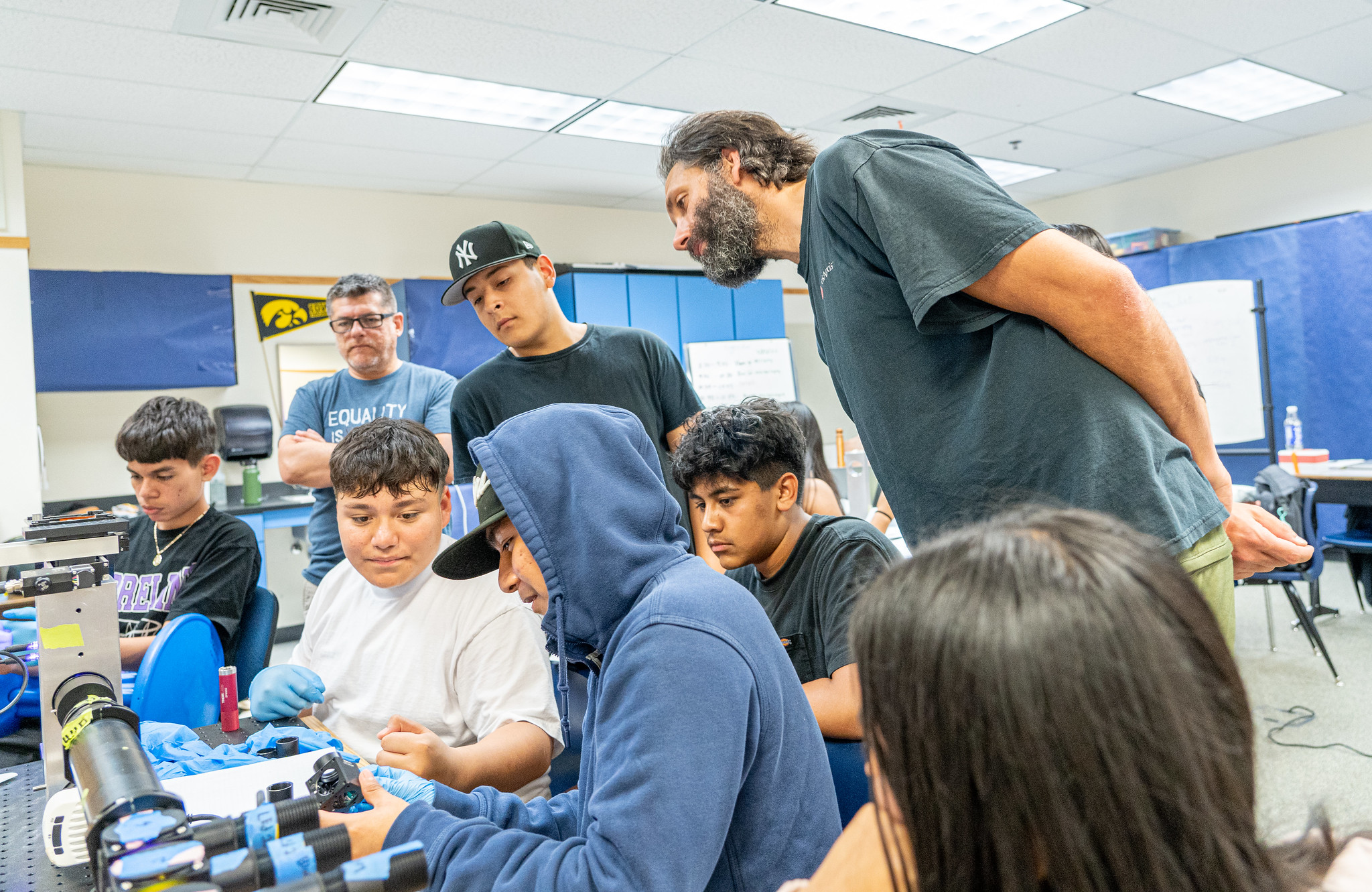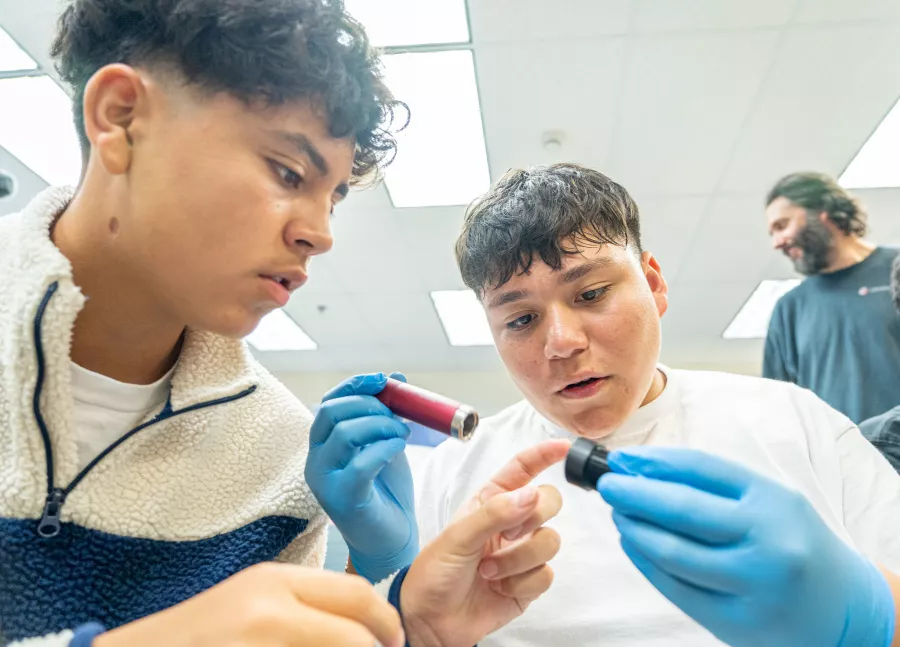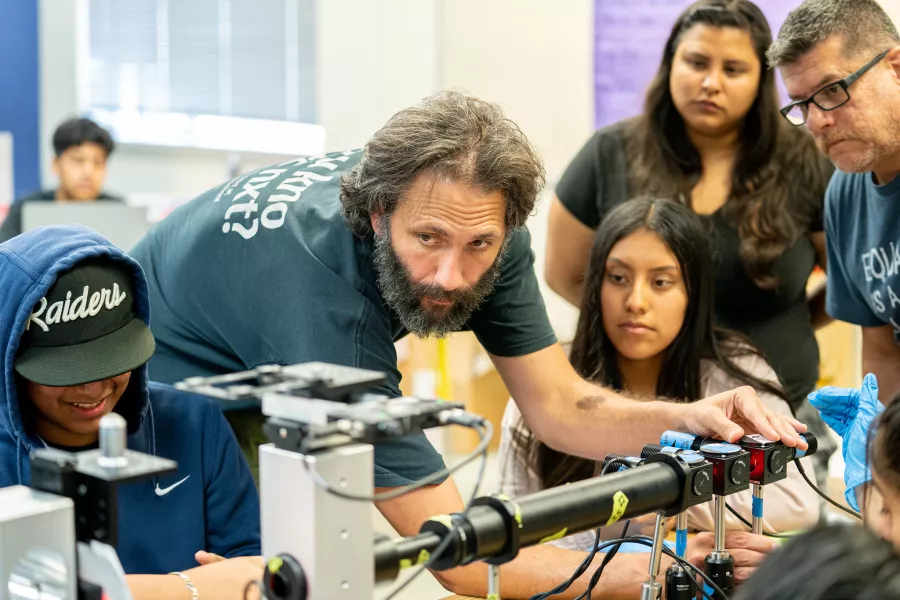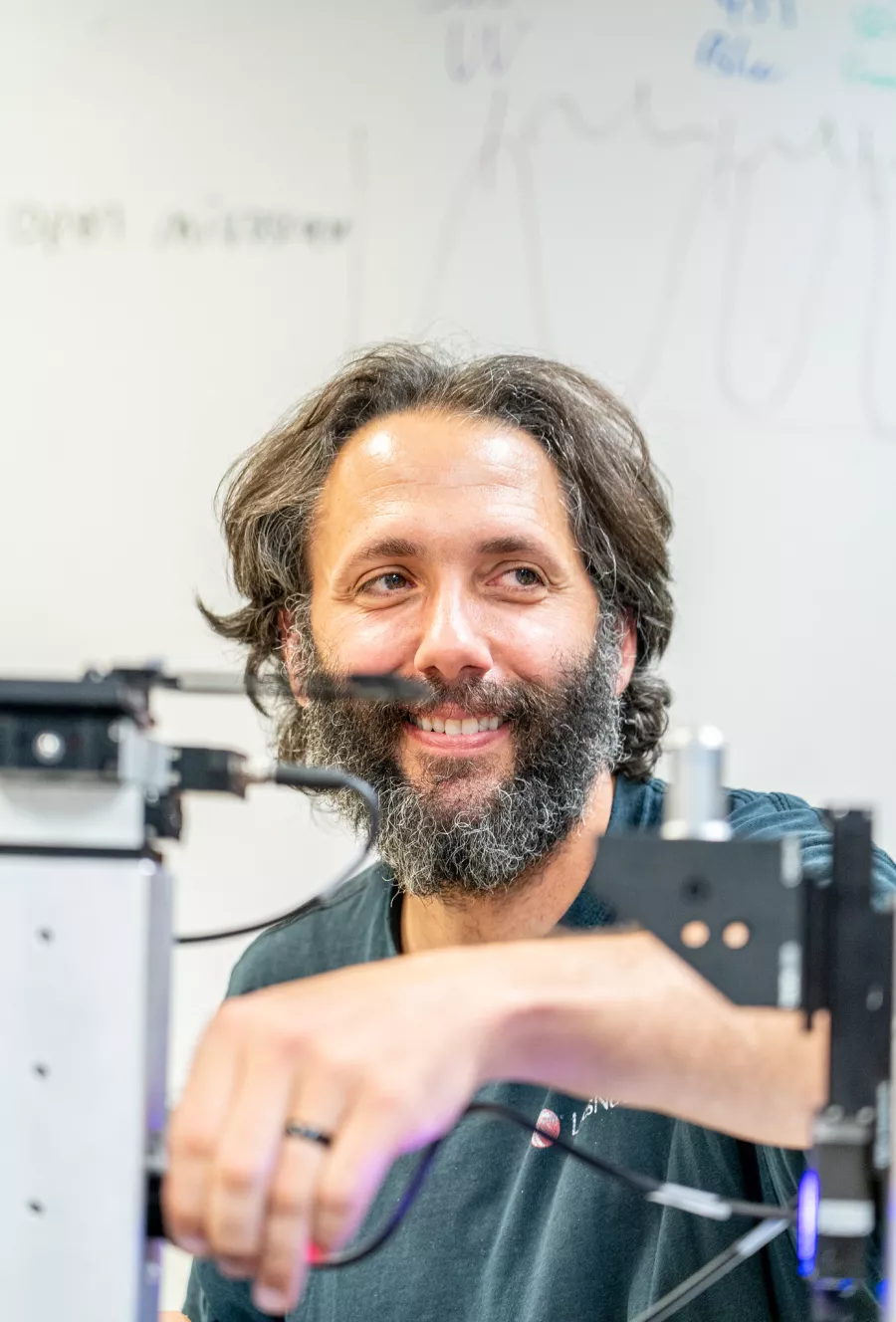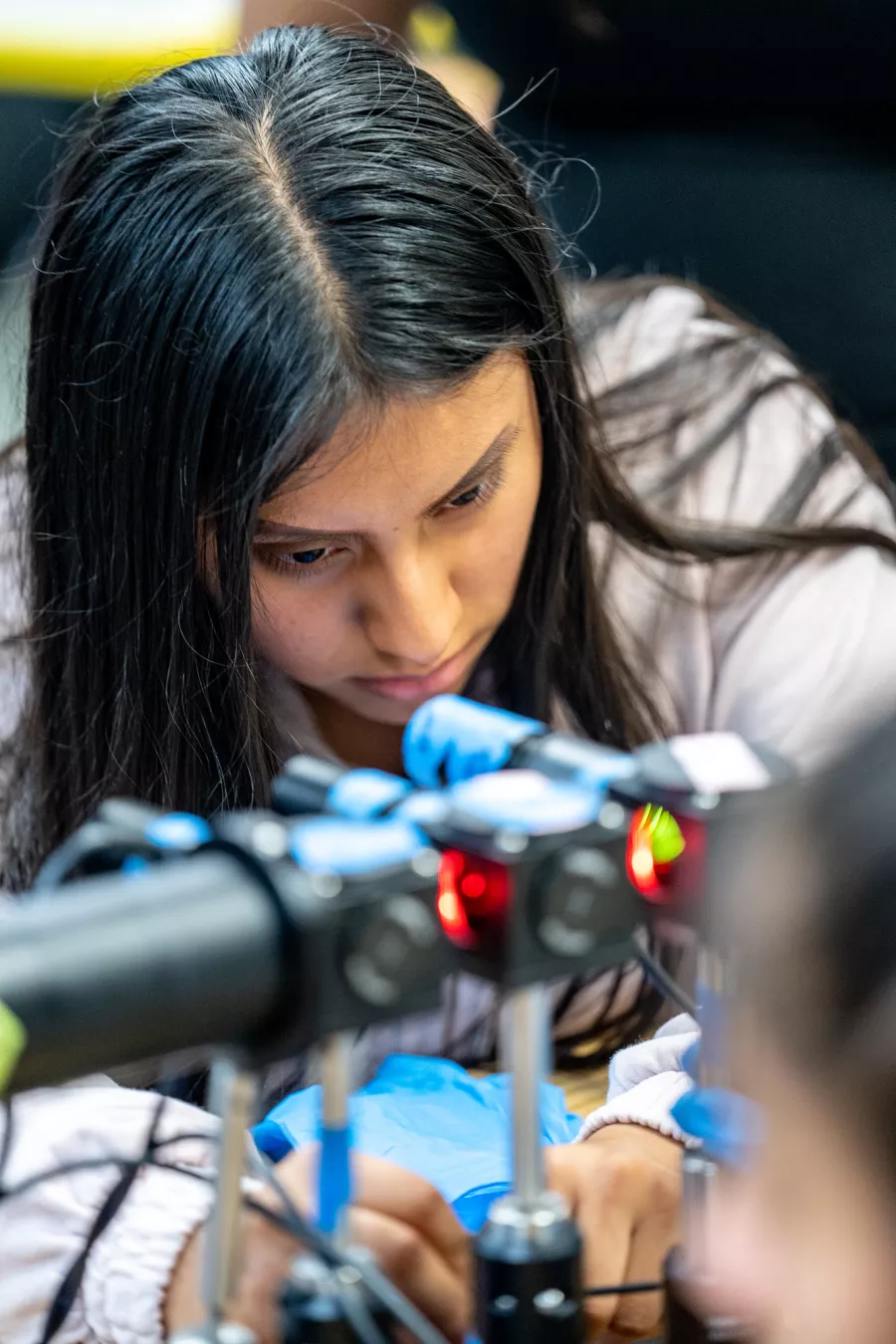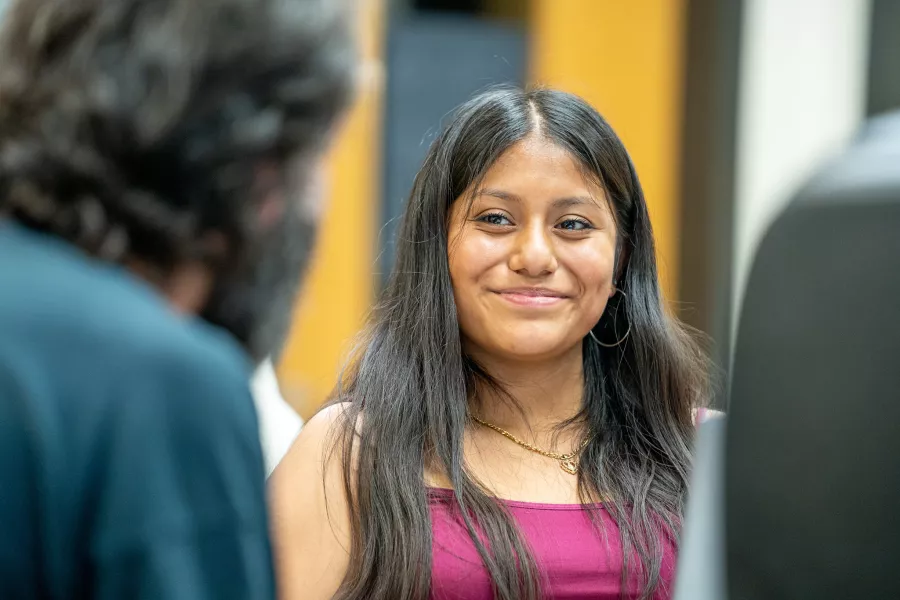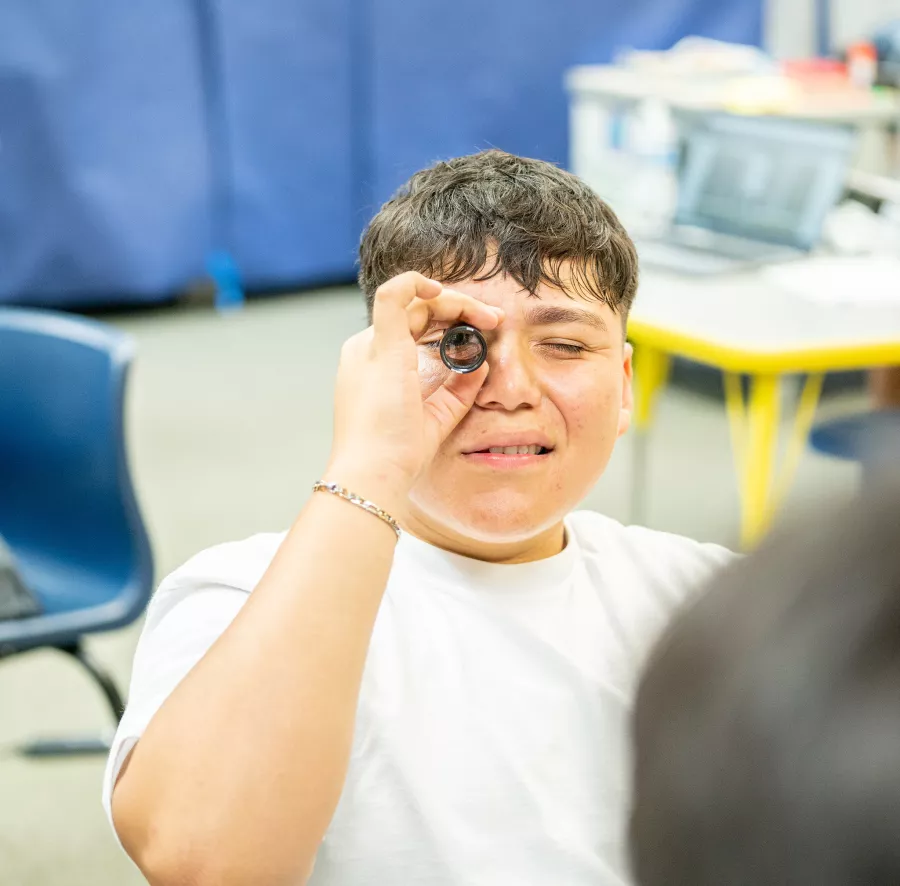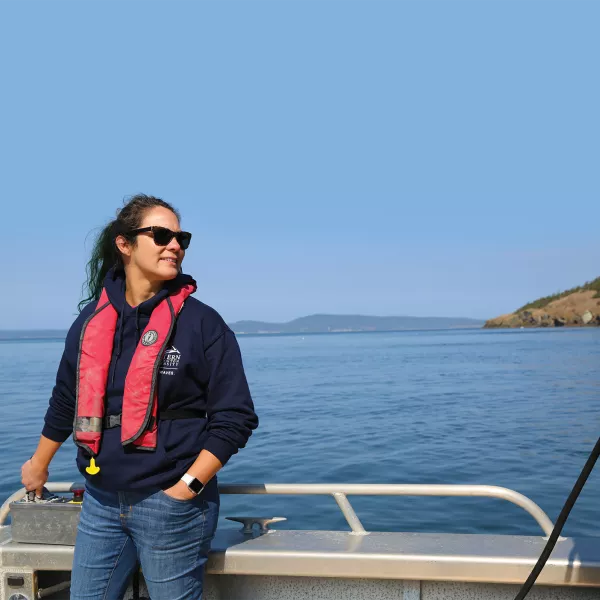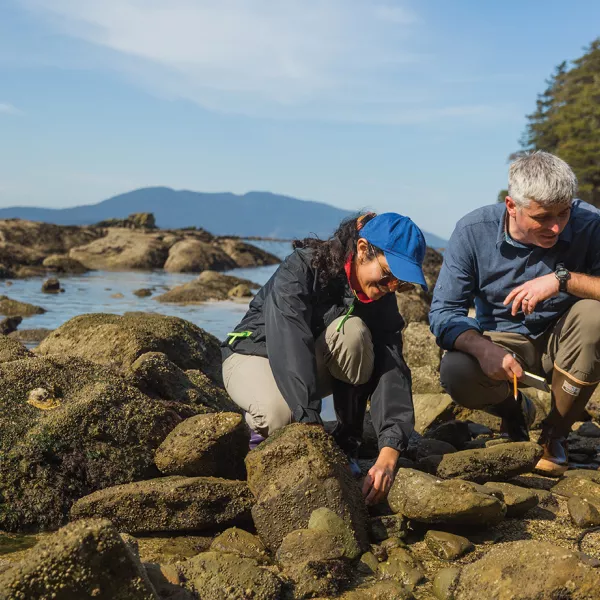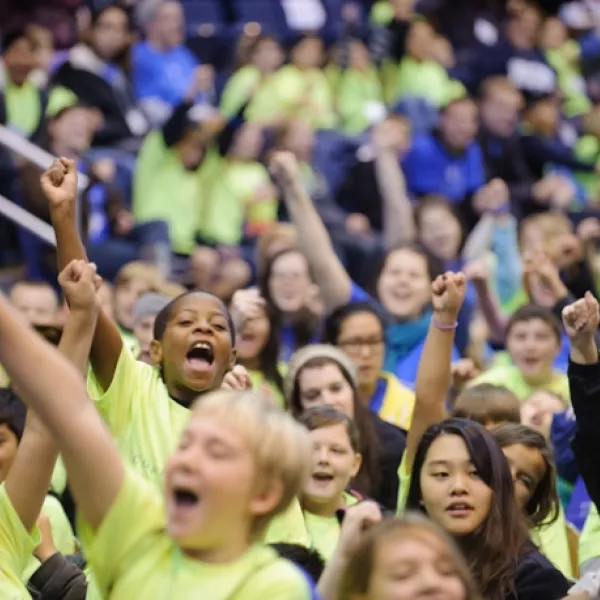Fans are blowing in the classroom on a hot summer day as a group of Mount Vernon High School ninth-graders are building a high-powered microscope, their focus on a small tube where a lens is stuck.
It’s the final piece of the microscope that they’re putting together at Little Mountain Elementary School under the eye of WWU Assistant Professor of Biology Nick Galati. The experience is part of a collaboration between Galati, as part of his National Science Foundation CAREER Grant, and UW GEAR UP, with a goal of creating an intensive STEM experience for this small group of Mount Vernon High School students and preparing them for college.
“I think it’s been a lot for them, ninth-graders coming out of COVID and online learning to two weeks with a college professor all day every day,” Galati says, but hands-on learning helps.
Galati was a first-generation student himself, who really connected with biology through research opportunities. His lab work at Western focuses on understanding cilia, evolutionarily ancient organelles that provide propulsion and sensation at the cellular scale. Cell biology will be the focus as the students return next summer for the research portion of their experience.
The microscope project is the first year of the three-year program — as the group of about a dozen mostly Latinx, first-generation students head into 10th grade — and it will continue each summer, building off of the previous summer’s learning as they move into data and research and finally into all the steps they need to prepare for college applications.
Mount Vernon educators play key roles in supporting the students throughout the process, and research students from Galati’s lab serve as mentors and guides for the high schoolers. Galati said he hopes the longer, more immersive and more one-on-one nature of the program will give the students the best chance for success after high school.
“Programs that distribute limited resources across large groups of students are great,” Galati says of more general, high-attendance events aimed at getting first-generation students interested in college. “There’s no magical one-day experience though, so let’s invest significant time and resources into these students every year consistently”
Student Leslie Solano heard about this program at a GEAR UP presentation at school, and thought it sounded fun, even though she hadn’t really thought about STEM as a career path.
“I do like STEM,” she says. “I like building stuff and engineering, making things with my hands.”
Solano struggled in some of her science classes in middle school, and she didn’t always connect with the material.
“Here it was different,” she says. “(Galati) let us figure it out on our own and then helped us. I got to do something with my hands instead of writing like I do in my science classes.”
Solano had been on the fence about college at the start of the summer. She, like many others in the program, would be a first-generation college student.
“I definitely do want to go to college,” she says. “At first I wasn’t sure. We would talk about college and bring up other resources. That’s when I started to feel more like I could do it.”
When the students aren’t working on the microscope, they are researching colleges, careers and programs, as well as exploring resources available to help pay for college.
For student Hector Fernandez, a career in STEM is something he’s already interested in, and he plans to go to college to study mechanical engineering.
“It’s something I like doing, building things,” he says, as he works at a computer, looking into degree options at the University of Washington or Pacific Lutheran University. “It’s been pretty fun. I was excited about the microscope and working as a team to take it apart and put it together.”
While the students are mixed in their knowledge and interest in STEM, Diana Soriano came into the program knowing she loved just about every letter in the STEM acronym. She was in a STEM program in fourth grade, joined the district’s AVID academic program in sixth grade, and is now active on her high school robotics team.
“I used to pretend I was a scientist on the playground,” she says. “I’m just really thankful that I found programs that help me push my interests and go to college. I know I want to go into STEM because of all the programs I’ve been exposed to.”
Despite the fact that Mount Vernon High School has a large Latinx population, Soriano is the only Latina on her robotics team and is also the only cisgender girl, a fact that pushes her to be more inclusive whenever she can. She’s noticed that many students and parents — even her own — can be intimidated by STEM because of perceptions about difficulty and the large amount of work and dedication it takes to succeed, as well as misconceptions about scientists as “crazy old men with crazy hair.”
“I get it. If you didn’t know anything about STEM it would be incredibly intimidating,” Soriano says. “I definitely think this program will help open new doors and make new connections with people.”
Breaking down barriers to science is a big part of the program, says Jesús Pérez Linares, a scientist-turned-fifth-grade teacher at West View Elementary in Burlington who is working with Galati on the program.
“I want to encourage students to achieve science and engineering careers,” he says. “Especially students of color and Latina girls, who are still underrepresented in the sciences.”
It’s something Pérez experienced firsthand. With his doctorate in marine biology, he often found that he was the only Latinx scientist at symposia and events, and he wondered why. He got his secondary education teaching certificate at Western in 2015 to help build the next generation of diverse scientists and science-literate students.
“Everything is science,” he says. “Even if you don’t want to be a scientist, the skills you learn in science help you a lot in life.”
Berenice Macias, a paraprofessional with the school district, agrees.
“I really identify with these students. I was the first person in my family to go to college,” she says, noting that she’s going to Western in the fall to pursue a teaching degree in Elementary Education. “Growing up, I always wanted to have these opportunities that they have. I really like that it’s encouraging students to be open about science but also to think beyond high school.”
Outreach to first-generation students is something Galati is passionate about. While the fun idea of building a microscope gets students in the door, he doesn’t expect them to all become microscopists, or even Western students for that matter. What he wants is to give them options and the tools to pursue them beyond high school; to help them build real plans for college and provide experiences that will help them stand out as they apply. In the process, students are building their confidence around what they’re capable of when it comes to STEM by doing hands-on work that connects with bigger scientific concepts.
“The coolest part is that smile when they get something to work,” he says. “I’ve seen students fiddle and read and tinker and then get it and smile. I think you need to get that smile.”
Junior Velazquez-Segovia came into the program unsure about what he might want to do after high school, but now he’s thinking about software engineering, inspired by the software that connects with the microscope.
“I’m just learning something new, something I might want to do,” he says.
As he works with the team to get the last piece of the microscope added, that’s when Galati sees the smile and the sense of pride that comes with accomplishing something you didn’t know you could do.
“It looks like something that’s difficult to build, and we did it and already took it apart and put it together twice,” Velazquez says. “You just feel better, happy with yourself that you got it.”
The smile stays with him as he leaves class for the day.
